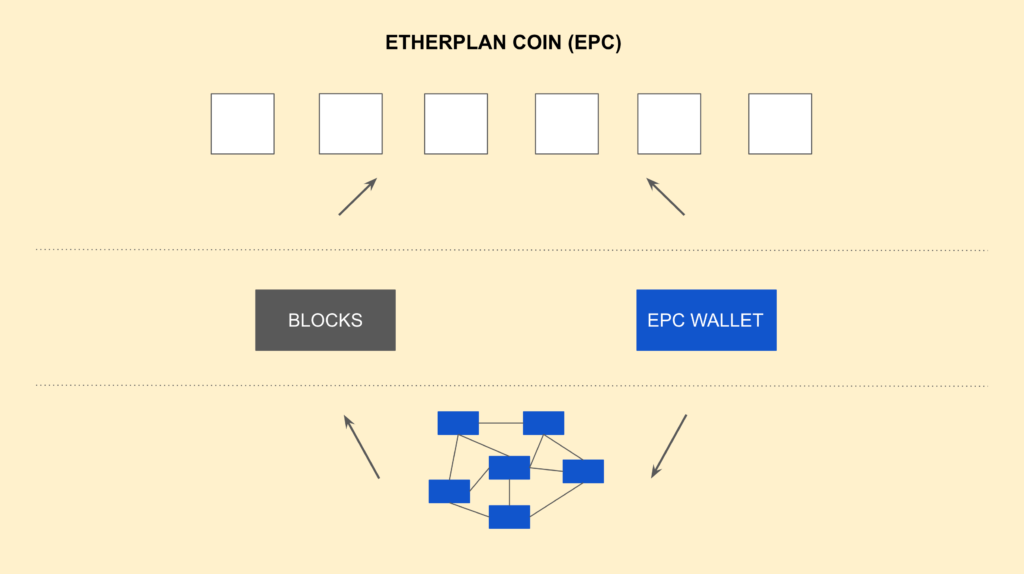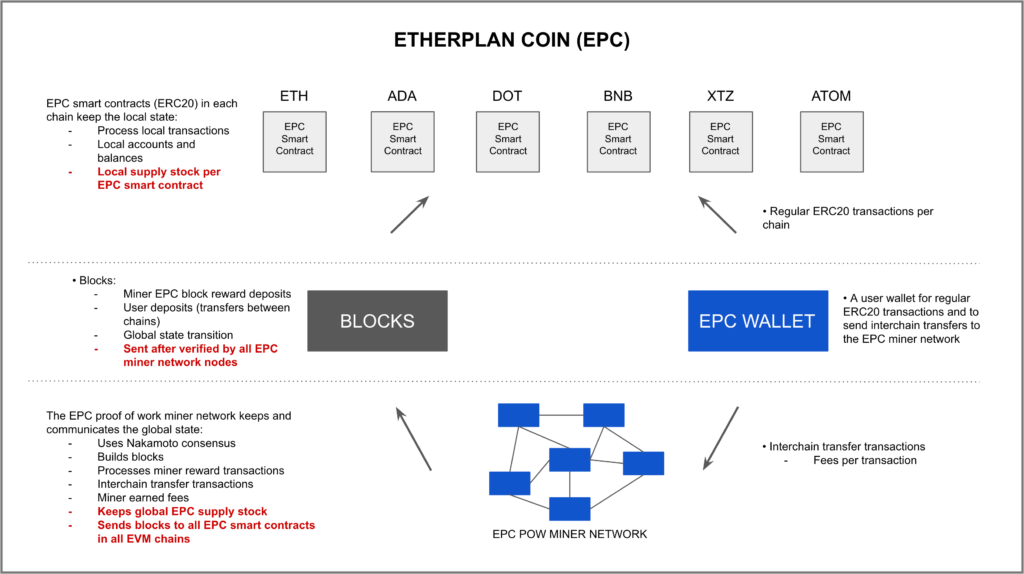This is part of a series of articles that explain Etherplan Coin (EPC):
• Etherplan Coin (EPC): A Multichain Mineable Token – First, Second, and Third Iterations – March 24, 2021
• Etherplan Coin (EPC): A Multichain Mineable Token – Fourth Iteration – March 26, 2021
• Etherplan Coin (EPC): A Multichain Mineable Token – Fifth and Sixth Iterations – March 30, 2021
• Etherplan Coin (EPC): A Multichain Mineable Token – Seventh Iteration – March 31, 2021

As I explained in my previous post, Etherplan Coin (EPC) is a mineable token that may be transferred between Ethereum Virtual Machine (EVM) blockchains without depending on multi-signature schemes or trusted third parties and may be held off chain when in transit between chains.
However, in this fourth iteration, although the system is more secure, the ability to hold coins off chain is diminished.
Below is the description of this fourth iteration with a new transaction type that replaces withdrawal and deposit transactions, and describes how fees are paid to miners when moving EPC from one chain to another.
Fourth Iteration
In this fourth iteration of the Etherplan Coin, users, through the EPC wallet, may send regular ERC20 transactions to all EVM chains to move coins internally as before, but the withdrawal and deposit transactions and certificates have been replaced with a single transaction type called “interchain transfer transaction”.

This new transaction type, closes a loophole that users could have multiplied coins by sending only deposit transactions through the EPC miner network, or EPC chain for short, without any previous withdrawal transactions to back them.
Transaction Description and Miner Fees
The interchain transfer transaction burns coins in one chain, issues coins in another, and may also include a fee that is paid in EPC to the miner who found the EPC block that is then sent to the EVM chains to change the overall state of the system.
As an example of how the transaction and fee work, if a user wants to transfer, say, 10 EPC from Cardano to Polkadot, the transaction would read:
– Chain of origin: Cardano
– From account: 0x24
– Amount: 10
– Fee: 0.20
– Chain of destination: Polkadot
– To account: 0x89
When the EPC chain receives the interchain transfer transaction it will include it in a block and resend the instruction to all chains as follows:
– Chain of origin: Cardano
– From account: 0x24
– Burn: 10.20
– Chain of destination: Polkadot
– To account: 0x89
– Issue: 10
– Miner account: 0x15
– Issue: 0.20
Summary
As said above, the fact that now withdrawals and deposits are fused into one interchain transfer transaction that is sent through the EPC chain practically eliminates the possibility of holding coins in transit indefinitely.
It is possible that this key feature may be re-introduced in future iterations.
Stay tuned!
Code Is Law